Sometimes, to choose a parquet board, it's enough just to decide the color. But more often, many questions arise when choosing.
We have been helping our customers to choose and buy parquet for 15 years and have identified four basic steps when choosing a parquet floor. Our guide will not only help you to understand how to choose parquet, but also answer the most common questions.
A parquet board is made of three (less two) perpendicularly arranged layers of wood. This makes the board durable and resistant to humidity and temperature fluctuations. The bottom two layers are made of softwood. Thickness of the bottom layer: 1-3 mm, middle layer: 7-12 mm. The upper layer, the visible one, is made of valuable species (oak, ash, walnut, etc.), thickness: from 0.5 to 6 mm. Most manufacturers make it 3,5-4 mm, which allows to sand the parquet floor up to three times and increase its service life.
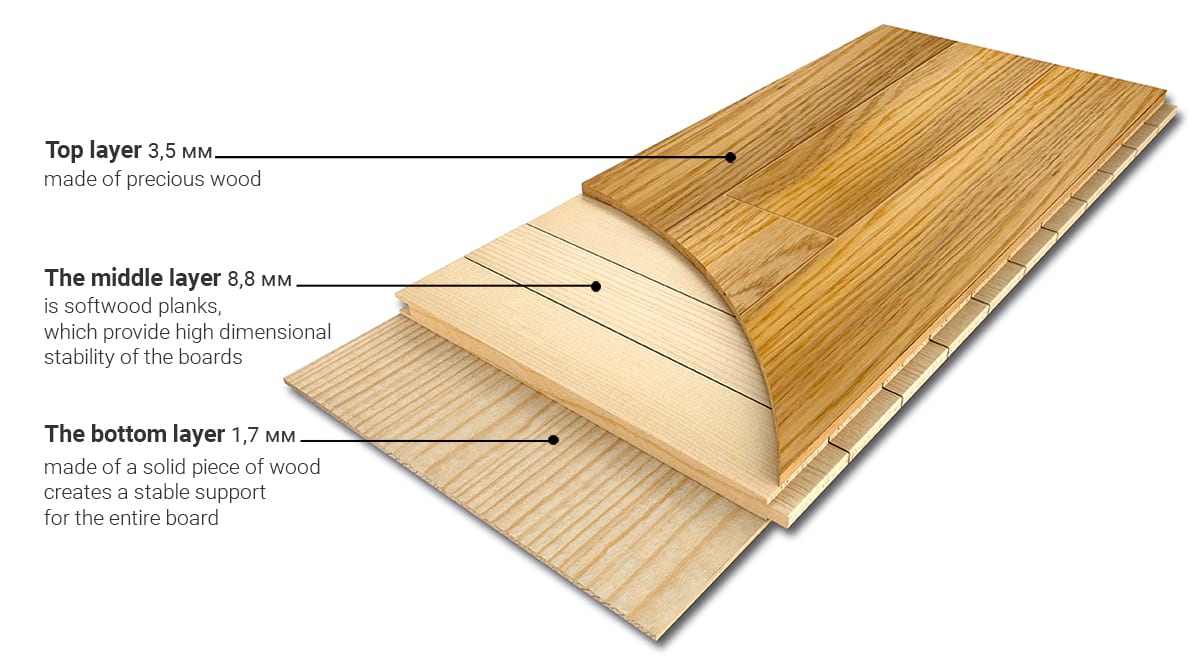

Parquet board construction
Everything here is individual. Some people know exactly what shade they need, some people match other finishing materials, some people just look for the color they like more, some people listen to the designer. The only advice we can give you is to keep in mind that all parquet floors change color (getting dark or turning yellow) over time.
The overall color of the floor will be affected not only by the shade of the tint, but also by the grade of wood of the top layer.
Grade system of a parquet board is the boards selection for the top layer of a parquet board. Grading is based on shade, variegation, texture, presence of knots, sapwood (lighter areas). Each manufacturer has its own grading system and its own terms for its definition, but three main types could be highlighted.
1. Select (other names: Kalm, Elite, Radial). The most homogeneous in color and texture parquet board. Dense structure without knots with vertical and semi-vertical arrangement of annual rings. This parquet board, thanks to its uniform texture, is well suited for most interiors, ideal for classic interiors.
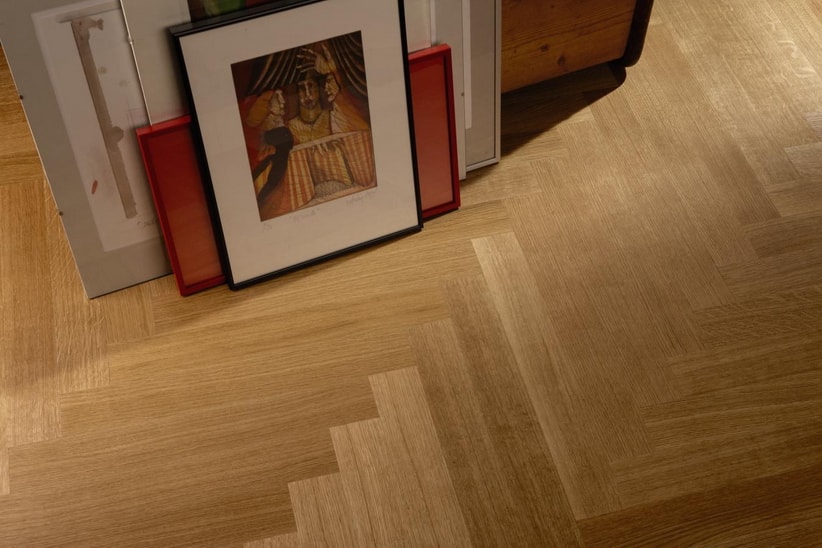
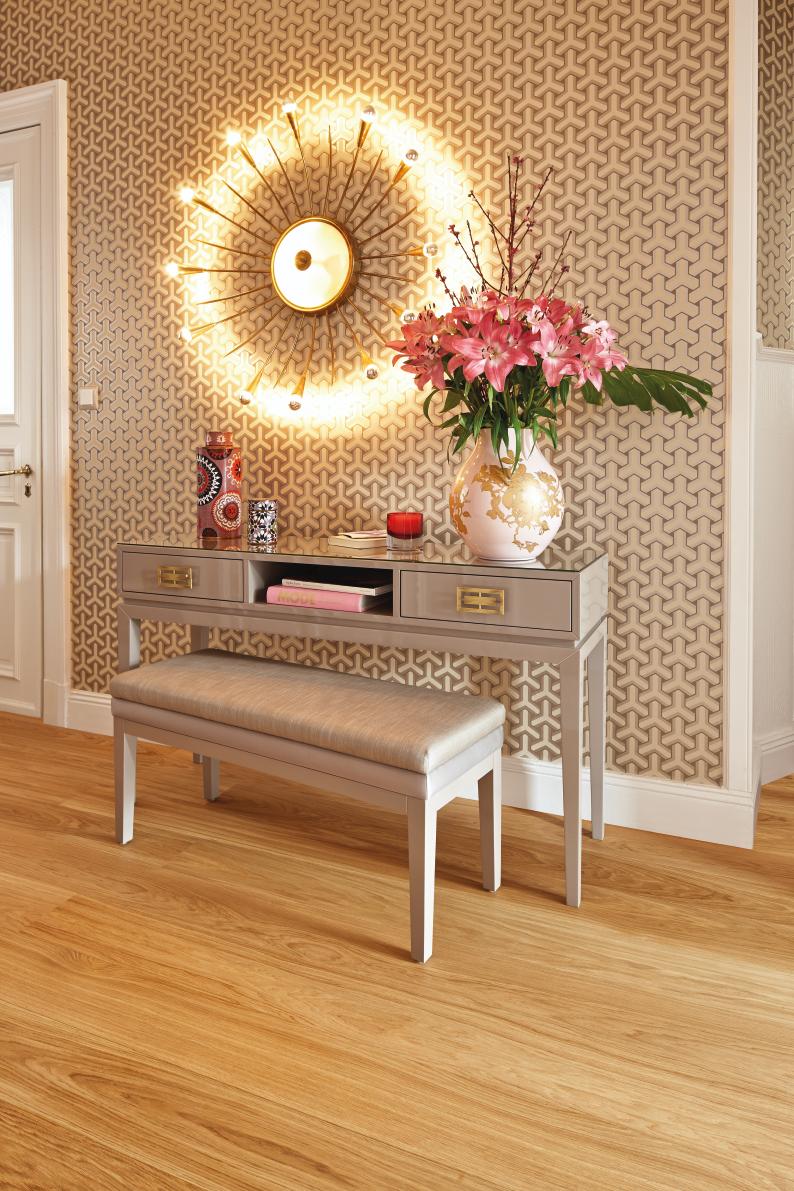
2. Natur (Living, Standart). Color variations are allowed due to the presence of sapwood and heartwood, as well as small and medium knots and minor defects. Planks could be selected from both radial and tangential cuts.


3. Rustic (Cottage, Country). The most «alive» wood structure with a wide range of colors, well-defined large knots and sapwood. Open cracks and knots are allowed, which creates the effect of an old floor with history. This board is suitable for country style interiors, but it will also look good in lofts or Scandinavian interiors, which are trendy today.
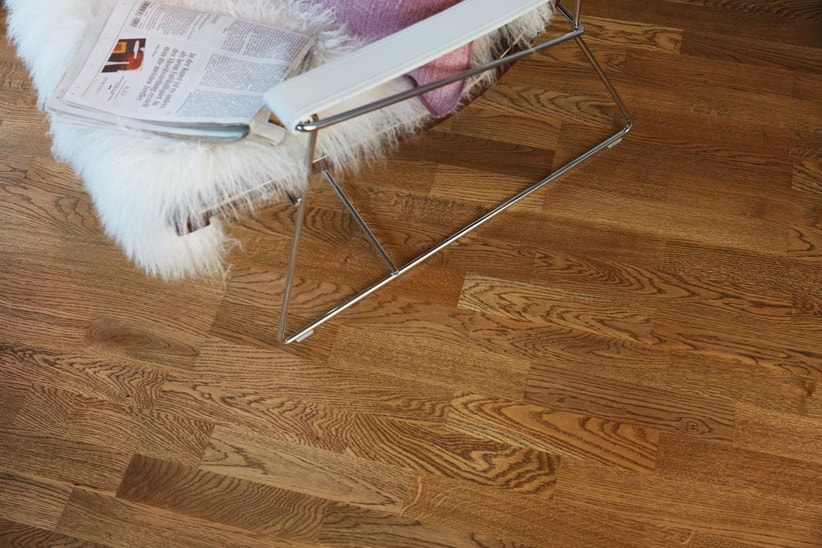
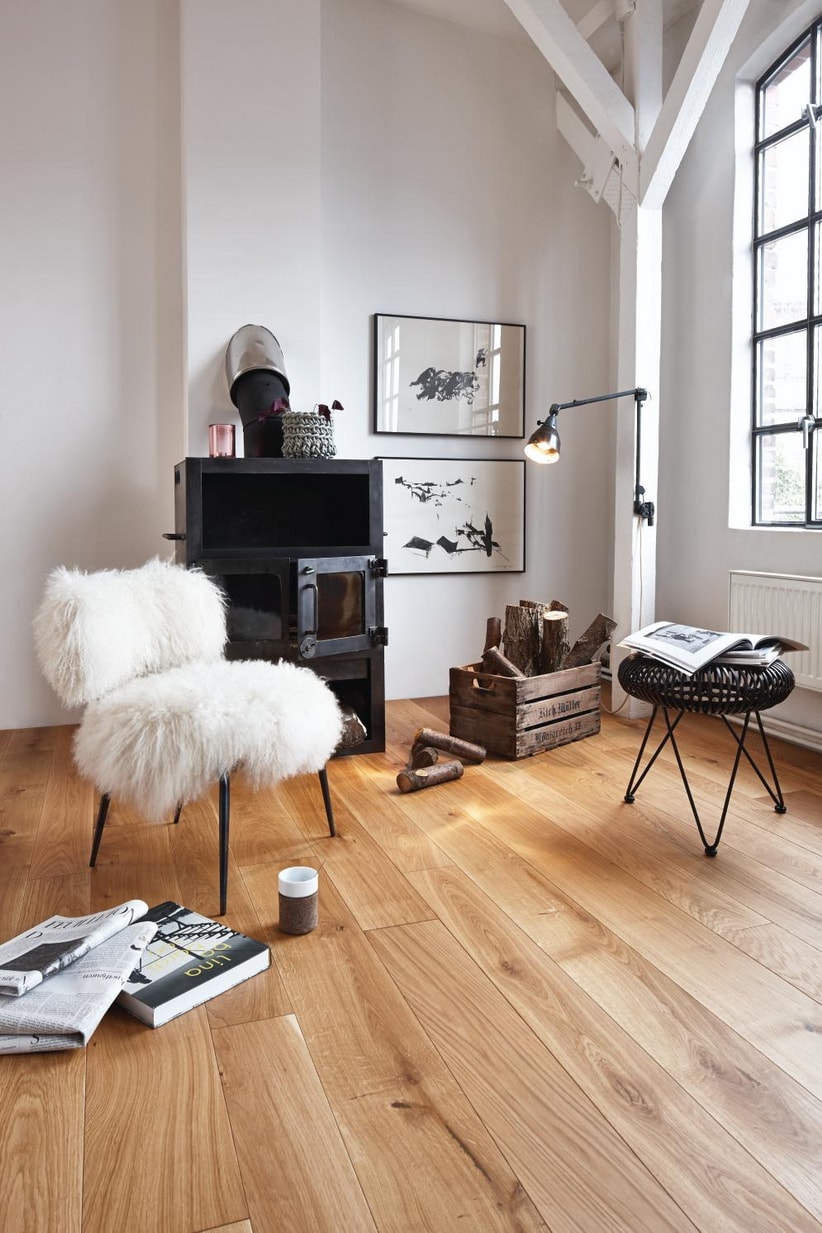
As each parquet board is unique in its appearance, it is not always possible to visualize the overall appearance of the floor from a single sample. This is especially true of the «rustic» grade. Therefore, ask your consultant to show photos of the interior with the chosen decor in the catalogue or on the manufacturer's website.
Please note that the same parquet floor decor may be available in different formats (i.e. the size and design may differ). Large format planks look better in rooms with a large area. Narrow planks of small length are suitable for laying in various patterns: deck, herringbone, cross-laying. Be sure to check with the consultant in the shop, what sizes of parquet board you like and could be.

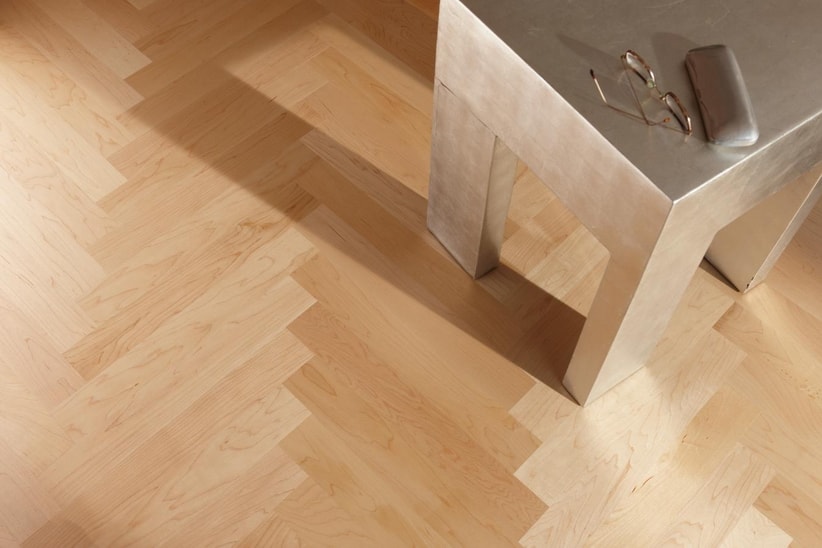
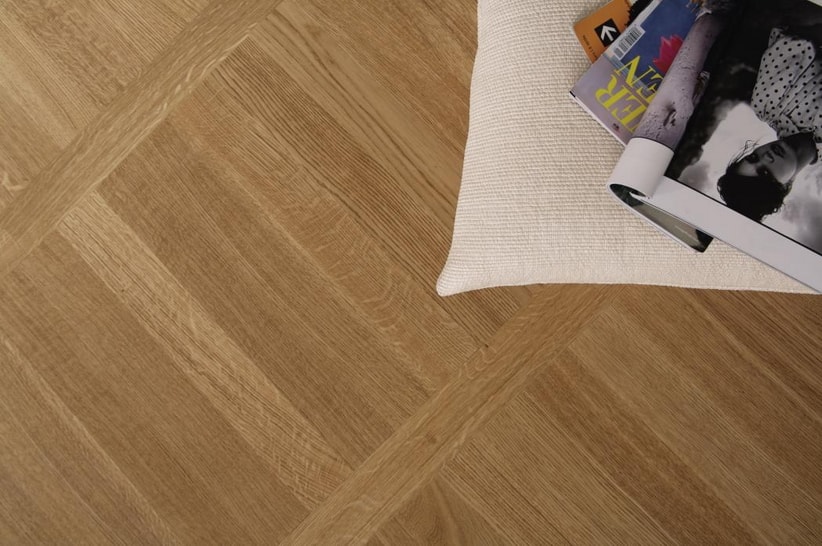
The most common types of parquet flooring are single-strip plank and three-strip (less common two-strip and multi-strip). The difference between these types of boards is only external. The stripe does not affect the functionality and reliability of the floor, but it affects on the cost. The top layer of a single-strip board is one single piece. In the three-strip board, it consists of three rows of narrower and shorter strips. It is difficult to extract a large piece of wood from a log without defects than a small one, so the price of a single strip board is higher than of a three-strip board.
1-strip parquet board |
3-strip parquet board |
Please note that a single strip board can be with bevel or without.
The bevel is a small bevel on two (long) or four sides of the board. It visually emphasizes each board, giving the effect of a plank floor.

The finish is applied at the factory and the customer receives a floor that can be used immediately after installation. Lacquer or oil is used as a coating.
Lacquer
Oil
Live Pure™ Ultramatte varnish (Boen development) combines the advantages of both types of coatings:
When choosing floor, also pay attention to the surface texture of the board. It can be smooth or brushed.
Brushing is a method of wood processing: soft fibres are removed from the top layer with a stiff brush. The result is a surface with a well-defined structure, both visually and tactilely.
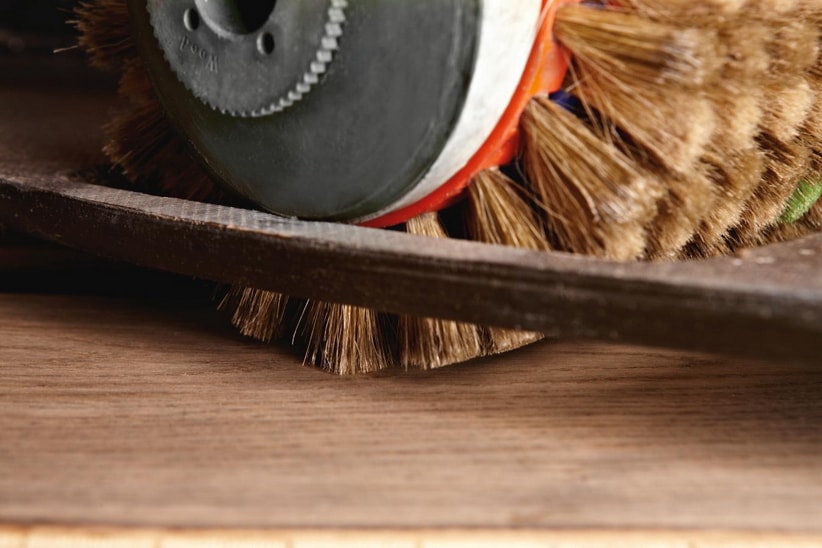
The construction of parquet flooring is three-layer and two-layer.
Features of the three-layer board
Features of the double-layer board
Of course, these instructions are general recommendations, and you can start choosing a parquet floor with yours most fundamental parameter.